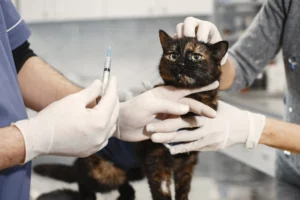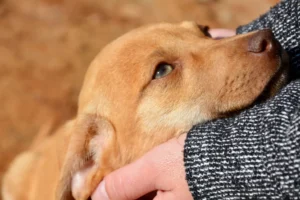If you’ve been finding hairballs around your home more frequently than you’d like, you might be wondering why your cat keeps puking them up. It’s a common issue among cat owners, but the answer isn’t always clear. Let’s explore the reasons behind this messy behavior and what you can do to help your furry friend.
Hairball Formation and Causes
Understanding Hairball Formation
Hairballs are a common occurrence in cats and are formed when your feline friend ingests loose fur during grooming. When cats groom themselves, their rough tongues pick up loose fur, which is then swallowed and passes through the digestive system. However, instead of being digested and passed out through the feces, the hair can accumulate in the stomach.
This build-up of hair can lead to the formation of a hairball. When the hairball becomes too large to pass through the digestive tract, your cat may vomit it up in an attempt to get rid of it. It’s important to note that occasional hairball vomiting is normal for cats, but frequent or severe vomiting could indicate an underlying issue that requires attention. Regular grooming and other preventative measures can help reduce the frequency of hairballs in your cat.
Common Causes of Hairballs
There are several reasons why your cat may be experiencing frequent hairballs. One common cause is the length and type of your cat’s fur – long-haired breeds are more prone to developing hairballs. Another factor is your cat’s grooming habits – if they excessively groom themselves, they are more likely to ingest hair. Diet can also play a role in hairball formation, as a lack of fiber or hydration can impact your cat’s digestion and lead to hairball issues.
Underlying health problems , such as gastrointestinal disorders or skin conditions, can also contribute to hairball formation. It’s essential to address any potential health concerns with your veterinarian to ensure your cat’s overall well-being. Regular brushing, providing a balanced diet, and offering hairball prevention treats can help minimize the frequency of hairball incidents in your cat.
Prevention and Treatment
To help prevent hairballs in your cat, regular grooming is key. Brushing your cat frequently can help remove loose fur before they ingest it. Incorporating a high-fiber diet and encouraging hydration can also aid in hairball prevention. There are hairball control products available such as petroleum-based hairball gels or dietary supplements that can help aid in the passage of hair through the digestive tract.
If your cat is experiencing frequent hairballs, consulting with your veterinarian is essential to rule out any underlying health issues. Your vet may recommend dietary changes, additional grooming, or other treatments to help alleviate hairball problems. Regular veterinary check-ups can also help monitor your cat’s overall health and address any concerns before they escalate.
Hairball Prevention Tips
If you’re tired of finding surprise presents of hairballs around your house, there are a few things you can do to help prevent them from forming in the first place. First and foremost, regular grooming is key. By brushing your cat regularly, you can help reduce the amount of loose hair that they ingest while grooming themselves. Additionally, feeding your cat a diet specifically formulated to help control hairballs can make a big difference. Look for food that contains a good balance of fiber to help move hair through their digestive system more easily. Remember, a little bit of prevention can go a long way in keeping those pesky hairballs at bay!
Home Remedies for Hairballs
If you’re looking for some natural remedies to help your cat deal with hairballs more easily, you’re in luck. One simple solution is adding a teaspoon of olive oil to your cat’s food a few times a week. This can help lubricate their digestive tract and make it easier for hairballs to pass through. Another option is giving your cat a little bit of canned pumpkin. The fiber in the pumpkin can help move things along and reduce the frequency of vomiting. Just be sure to check with your vet before trying any new remedies to ensure they are safe for your furry friend.
When to Seek Veterinary Care While the occasional hairball is normal for cats, frequent or persistent vomiting could be a sign of a more serious issue. If your cat is constantly throwing up hairballs or seems to be in distress, it’s time to call the vet. They can help determine if there is an underlying health problem causing the excessive vomiting and provide appropriate treatment. Remember, it’s always better to be safe than sorry when it comes to your cat’s health. Don’t hesitate to reach out to your vet if you have any concerns.
Signs of Hairball Complications
If your cat is consistently vomiting hairballs, it may indicate a more serious issue. Look out for symptoms such as frequent gagging or retching without producing a hairball, lack of appetite, lethargy, constipation, or diarrhea. If you notice any of these signs, it’s essential to consult your veterinarian promptly to rule out any underlying health concerns. Ignoring these symptoms could lead to more severe problems for your feline friend.
Diagnostic Procedures
When you take your cat to the vet for frequent hairball regurgitation, they may perform various diagnostic tests to determine the root cause of the issue. These tests could include blood work to check for abnormalities, x-rays or ultrasounds to evaluate the gastrointestinal tract, or even a fecal exam to rule out parasites. By conducting these diagnostic procedures, your vet can pinpoint any underlying health issues that may be contributing to your cat’s hairball troubles. Remember, early detection is key to effective treatment.
Additional Tips and Recommendations
- Brush your cat regularly to help reduce the amount of loose hair they ingest while grooming. This can significantly decrease the frequency of hairball regurgitation.
- Provide your cat with a diet high in fiber to aid in digestion and hairball prevention. Look for cat food specifically formulated to help manage hairballs.
- Add a bit of coconut oil to your cat’s food to help lubricate their digestive tract and make it easier for hairballs to pass through.
For more information on managing hairballs in cats, you can check out this trusted resource from the American Society for the Prevention of Cruelty to Animals (ASPCA): ASPCA Hairball Remedies.
Dietary Recommendations for Hairball Control
If your cat keeps puking up hairballs, it might be time to adjust their diet. Consider feeding them food specifically formulated for hairball control. Look for options marked as “hairball remedy” or “hairball control” to help reduce hairball formation. These formulas often contain added fiber to aid in digestion and reduce the occurrence of hairballs. Additionally, make sure your cat stays hydrated by providing fresh water at all times. Proper hydration can also help prevent hairballs from forming in your cat’s digestive system.
When selecting food for your cat, opt for high-quality, grain-free options that are rich in protein. Avoid foods with excessive fillers or artificial ingredients, as these can contribute to digestive issues and exacerbate hairball problems. Regularly grooming your cat to remove loose fur can also help minimize hair ingestion and subsequent hairball formation.
Remember, a balanced diet is key to maintaining your cat’s overall health and well-being. By making small changes to their diet and grooming routine, you can help reduce hairball puking episodes and keep your feline friend happy and healthy.
Environmental Enrichment
In addition to adjusting your cat’s diet, consider providing environmental enrichment to reduce stress and limit excessive grooming, which can lead to hairball formation. Cats are natural hunters and explorers, so offer them opportunities to engage in these activities indoors. Interactive toys, puzzle feeders, and climbing structures can provide mental and physical stimulation for your cat.
Creating a stimulating environment can help alleviate boredom and anxiety, which are common triggers for excessive grooming behavior. Set aside dedicated playtime each day to engage with your cat and encourage them to stay active. By keeping your cat mentally and physically stimulated, you can help reduce stress levels and prevent excessive grooming that contributes to hairball formation.
Remember, a happy and content cat is less likely to obsessively groom themselves, leading to a decrease in hairball-related puking episodes. Invest in enriching your cat’s environment to promote their overall well-being and reduce hairball issues.
Interesting Facts About Hairballs
- Hairballs are composed of hair that a cat ingests while grooming themselves.
- Cats have tiny hook-like structures on their tongues that help remove loose fur, but can also lead to hairballs.
- Hairballs are typically expelled through vomiting or coughing, as cats cannot pass them in their stool.
- Regular grooming and proper diet can help prevent hairball formation in cats.
- Long-haired cats are more prone to hairballs due to their increased grooming habits and thicker coats.
By incorporating dietary changes, providing environmental enrichment, and staying proactive with grooming, you can help manage your cat’s hairball issues effectively. Remember, a holistic approach involving diet, enrichment, and grooming is key to keeping your feline companion happy and healthy.
Evolutionary Purpose of Hairballs
Did you know that hairballs in cats actually serve an evolutionary purpose? Back in the wild, cats would ingest the fur of their prey while grooming themselves. The hair would then accumulate in their digestive tract, helping to eliminate any indigestible parts of their prey. While our domesticated feline friends may not be hunting for their meals anymore, this natural behavior still exists. Hairballs are essentially a way for your cat to rid their system of any hair that they’ve ingested while grooming. It may not be the most pleasant thing to clean up, but it’s a natural and necessary process for your cat’s health.
Myth Busting: Hairball Remedies
Let’s debunk some common misconceptions about hairball remedies. While there are plenty of commercial products marketed as miracle cures for hairballs, not all of them are as effective as they claim. Some may help lubricate your cat’s digestive tract to ease the passage of hairballs, but they won’t prevent them from forming in the first place. The best way to address your cat’s hairball issue is by grooming them regularly to reduce shedding and the amount of hair they ingest. Brushing your cat’s coat will not only help prevent hairballs but also strengthen your bond with your furry companion. Remember, a little grooming goes a long way in keeping those hairballs at bay.
Hairball Remedies That Work
- Regular Brushing: Daily grooming sessions can significantly reduce the amount of loose fur your cat ingests.
- Dietary Changes: Switching to a high-fiber diet can help move hairballs through your cat’s digestive system more efficiently.
- Hydration: Encourage your cat to drink plenty of water to aid in the digestion process and prevent hairballs.
By understanding the causes of your cat’s hairball issues and implementing preventive measures like regular grooming and diet changes, you can help your feline friend lead a happier, healthier life.
Alex, a passionate animal lover, has experience in training and understanding animal behavior. As a proud pet parent to two dogs and three cats, he founded AnimalReport.net to share insights from animal experts and expand his knowledge of the animal kingdom.









